Want to hear more from the actors and creators of your favorite shows and films? Subscribe to The Cinema Spot on YouTube for all of our upcoming interviews!
Managing editor & film and television critic with a Bachelor's of Arts in English Literature with a Writing Minor from the University of Guam. Currently in graduate school completing a Master's in English Literature.
HBO’s hit dystopian science-fiction drama series, Westworld, has returned just over two years after its Season 3 finale. I am fortunate enough to have seen the premiere episode and the three episodes that follow. The Season 4 premiere is titled, “The Auguries”; the episode is written by series co-creator Lisa Joy and consulting producer Will Soodik and is directed by executive producer Richard J. Lewis.
In this review, I will be discussing Westworld Season 4 Episode 1. There will be no spoilers here, as the title of this article suggests. Nonetheless, please read ahead at your own discretion to avoid any possible revelations.
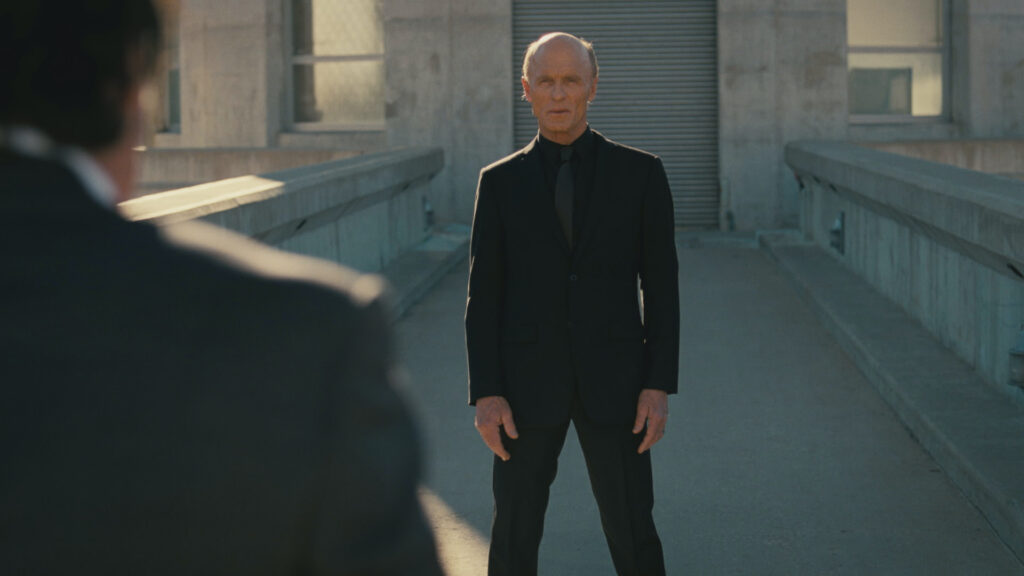
Plot Synopsis
According to WarnerMedia, here is the synopsis for Westworld Season 4 Episode 1 — “The Auguries”.
Hello again. Don’t worry about a thing. It’s all in your head.
WarnerMedia
Discussion
The Westworld Season 4 premiere subtly depicts a life post-“eventful” catastrophe, much like how some other television programs serve as critiques of the world we lived through since the onset of the COVID-19 pandemic. Similar to our own reality, Nolan and Joy’s television series picks up a while after society’s uprising involving Rehoboam and Incite. In this first episode, “The Auguries” shows how these incidents affect a few of the series’ beloved characters and further exhibits why the episode title hits close to home.
I had to watch the episode twice to properly get the feel of things, and even the new introductory title sequence suggests that we live in a world after “The New World” — the Season 3 subtitle. At the end of the title sequence for Season 4, “Adapt or Die”, we see humanlike figures trapped in their own little tube spaces. As the camera zooms out of the frame, we see the planet made up of these tubes, sort of like how a beehive is formed. I can only surmise that this new futuristic world will result in a “hive mind” or a new machine for what we consider the “west world”.
In one instance, we have William (Ed Harris) speaking with a group of businessmen about something that he needs. His presence is no surprise as Season 4’s finale shows us his fate in one of two credits-scenes. He tells a businessman (Arturo del Puerto), “This is America. Everything here is for sale”.
The former line comes from Donald Glover’s Grammy award-winning 2018 song, “This Is America”, which appeared the following year in the film, Guava Island, directed by Hiro Murai. In that film, Glover’s character, Deni, states, “America is a concept. Anywhere, where in order to get rich you have to make someone else richer, is America”. Let’s dive a little more into that concept.
America as Westworld, or the West World as “America”
America as a state of control is as harsh as we have seen it, especially recently with the government’s authority over women’s bodies. If we are to discuss “America”, then it is important to note that control is a huge topic.
French philosopher Gilles Deleuze writes in his 1992 essay, “Postscript on the Societies of Control” that the new capitalism that we are experiencing — Integrated World Capitalism (IWC) — is “[one] of higher-order production”. It possesses hegemonic power through the likes of major companies (Facebook, Amazon, Apple, Netflix, Google, Disney); and in the case of Westworld, it would be entities such as Delos and Incite. However, this is only Seasons 1 through 3 of the show.
At this point, the world, including the series’ characters, is suffering with the outcome of their actions. As I said in the previous section, the world has been transformed into a new machine. According to Deleuze and Félix Guattari’s critical 1980 text, A Thousand Plateaus, “[T]here is the institution of an assemblage, a war machine or criminal machine, which can reach the point of self-destruction”. This is where the world is currently situated, and by this, I mean both our actual world and the world of Westworld.
Season 4 mirrors a lot of real-life issues, which I shall briefly cover next, without giving too much of the plot away.
Political Climate Change or Global Warning?
The Season 4 premiere of Westworld, indeed, presents an ominous message. From the title, “The Auguries”, the word “augury” is defined by the Oxford Dictionary as “a sign of what will happen in the future”, this very definition being synonymous with the term, “omen”.
In one instance, one character is speaking about the protests of Project Incite with a colleague at work. This colleague questions the purpose of the riots that had taken place at the end of Season 3, as well as the extent to which this has changed those who are involved. This mirrors the Black Lives Matter protests of 2020, along with the many other movements that followed during the COVID pandemic. Traumatic occurrences such as this are what prompt people into preparing for future matters, i.e. living through one life-threatening event and using that experience to prepare for the possibility of another.
In the world we live in today, it would be entirely unsafe to not anticipate what could and will most likely happen. We see one individual being killed by law enforcement or by a hate-filled person nearly every day, so of course, it should be wise to prepare and prevent this from happening again. Yet, these things have been all the more too frequent.
In another character’s arc of the episode, we see a woman being told that her ideas are not what the public seeks. This same woman is nearly attacked by a man on her way home, which led me to think this is similar to the murder of Kitty Genovese in 1964, later prompting the theory we call the “bystander effect” today. This theory suggests that individual people will be less likely to aid a potential victim if others are also present. We still see this today in the streets of the Western world: someone can be attacked on the sidewalk by assailants and instead of helping, observers are recording the incident on their cellphones. This mistreatment of women is most crucial for our understanding today, especially with the overturning of Roe v. Wade.
What is the Augury, Then?
Westworld is not shy when depicting the future of the world. The Season 4 premiere foretells that we will live in a society where post-traumatic stress is far too common among the population. This fear that we possess will be a shared one. Not only that but such mistreatment of women will keep on happening. What started with Kitty Genovese has brought up a Gabby Petito and who else? We will continue to have names of victims such as George Floyd, Breonna Taylor, and more as a part of history and just another statistic to add onto.
The figures of power make this happen, and their rhetoric is key to influencing followers into believing what is true. As one character states, “Take a look at this world. Nobody wants easy or natural. Art is a lie that tells the truth, honey!” What Westworld succeeds at is sending that message via television as an art form. It is fictional albeit in a way that demonstrates what is real. When people tell you, “it’s just a movie” or “it’s just a show”, it is important to not ignore the truth that lies within.
In the final analysis, the augury of “The Auguries” is that this is all happening, as I type this and as you read this. It is now, and you can wake up, neglect the results, and then wake up again; or you can break through that cycle.

The Crew of Westworld Season 4
Westworld is created by Jonathan Nolan and Lisa Joy and is based on the film of the same name written by Michael Crichton.
Joy, Nolan, Ben Stephenson, Denise Thé, Alison Schapker, Richard J. Lewis, Athena Wickham, and J.J. Abrams serve as the executive producers. Matt Pitts and Mark Tobey serve as the co-executive producers; while Don Bensko, Jay Worth, and Noreen O’Toole serve as the producer. Kelly Calligan, Halle Phillips, Skye Wathen, Caleb Duffy, and Susan Ekins serve as the co-producers.
John Conroy serves as the director of photography. Andrew Seklir, Sarah C. Reeves, and Thomas Sabinsky serve as the editors for the Season 4 premiere. Sabinsky also serves as the assistant editor for the episode.
Suzanne Wrubel serves as the story editor. Alli Rock serves as a staff writer on the show.
Ramin Djawadi scores the music for the series. Benjamin Cook is the sound designer, while Christopher Kaller serves as the music editor. Trygge Toven and Sean O’Meara are the music supervisors.
Jon Carlos serves as the production designer. Jay Worth is the visual effects supervisor, while Elizabeth Castro serves as the VFX producer. Chris DiLeo, Amelia Brooke, Rachel Aguirre, Rebekah Scheys, Michael Navarro, and Elaine Jen are the art directors; while AJ Cisneros and Jeanine A. Ringer are the assistant art directors.
Debra Beebe and Jo Kissack Folsom serve as costume designers. Margaret Robbs and Giorgia Tramontano serve as assistant costume designers.
Jose L. Zamora is the department head hairstylist. Michael Buonincontro and Lori Fenton serve as key hairstylists, while Dorchelle Stafford and Lorena Zamora are hairstylists. Elisa Marsh is the department head make-up artist.
Andrew Hull, Daniel Jennings, Sally Thornton, James Bolenbaugh, Mindi R. Toback, C. Scott Baker, Ryan Garton, and David Chow serve as the set designers. Dan Caplan is the storyboard artist. Julie Ochipinti serves as the set decorator.
John Papsidera and Kim Winther are the casting directors of Westworld. Maddalena Zuppetta serves as the casting assistant. Bill Dance and Sandi Allesi are the extras casting directors, while Terance Harris and Shayne Hartigan are the extras casting associates.
In the New York unit, Barbara McNamara is the extras casting director. Rachel Musson is the extras casting associate, while Patrick Kline is the extras casting assistant. Geoffrey Ehrlich is the art director, while Lucy Pope is the assistant art director. Candice Cardasis is the set decorator. Ashleigh Williams is the head of the make-up department.
The Cast of Westworld Season 4
Evan Rachel Wood stars as the protagonist of Westworld.
Thandiwe Newton portrays Maeve Millay, while Aaron Paul portrays Caleb Nichols. Ed Harris portrays William, also known as the “Man in Black”.
Jeffrey Wright, Tessa Thompson, and Angela Sarafyan are credited as their respective characters, Bernard Lowe, Dolores Abernathy (previously Charlotte Hale), and Clementine Pennyfeather.
Ariana DeBose makes a guest appearance, while Rodrigo Santoro is credited as Hector Escaton. Fredric Lehne, Arturo del Puerto, and Alex Fernandez also make appearances.
Nozipho McLean plays Uwade, while Celeste Clark plays her daughter, Frankie. Manny Montana plays Carver. Michael Malarkey plays Emmett. Aaron Stanford plays Peter, a man who tries to contact Dolores; while Brandon Sklenar plays Henry.
Ted Monte plays Arthur. Jim Cody Williams plays Woody. La’Charles Trask plays Jo, while Timothy Lee DePriest plays Walter. Cronin Cullen and Matthew Russell play rowdy men; while Jasmyn Rae appears as Maeve’s daughter.
Performances and Character Developments
Wood delivers a different performance this season than we have seen before. The actor shows a side of herself that we have not seen since the pilot. Her character is uncanny, returning as something new — brunette and not blond, and living a different life than those we have seen in the previous two seasons. I am curious as to what choices she makes next and how this will change her. While in Season 1 she had the narrative (and her fate thereof) written for her, she now has some free will to craft something of her own. However, this comes with its own issues…
Paul’s depiction of Caleb is as terrific as ever, still experiencing post-traumatic stress over his own decisions made in the past. His character’s life is just as uncanny as that of Wood’s, that is, uncanny in the change of lifestyle but just slightly similar to what the show has presented us last season. What is new this time around is that Caleb has a curious dynamic with Newton’s Maeve, which is teased in the final shot of “The New World” — the two gazing out at society’s self-destruction a la Fight Club.
Maeve is now just as humanlike as Wood’s character. The only difference is her life has not gotten any better since the end of last season. She continues to fight the good fight despite the time it took to get to the point she is at currently. Newton does so well in the scenes she is in, whether she has the spotlight on her or when she shares it with Paul. Maeve still lives through post-traumatic stress like Caleb, and so I wonder if this will ever be resolved.
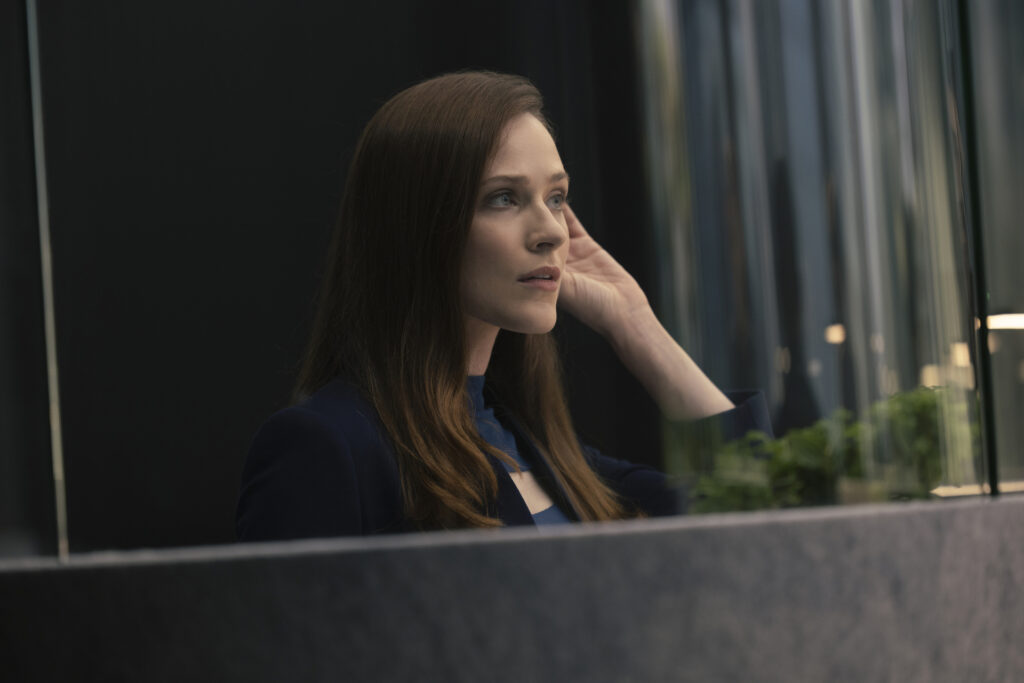
Final Thoughts on the Westworld Season 4 Premiere
“The Auguries” is a decent start to the new season. While a majority of the episode centers on the aforementioned characters, we have yet to see the other familiar faces make their debut in Westworld‘s “Adapt or Die” storyline. There is one scene that makes me all the more excited for HBO’s other upcoming dystopian science-fiction drama series, The Last of Us. This particular scene is its own thing, but I do see how it could translate in TLoU.
Overall, the pacing in this Season 4 premiere is brisk and has yet to show us what the endgame is. What happens after witnessing the west world being shaken up? Only time will tell, right? A state of control is a state of fear, and that is what this first episode is attempting to tell us.
Westworld Season 4 premieres on HBO this Sunday!
Have you seen Nolan and Joy’s series? If so, then what are your thoughts on it so far? Let us know! For more drama and science-fiction-related news and reviews visit and follow The Cinema Spot on Facebook, Twitter, and Instagram!
Managing editor & film and television critic with a Bachelor's of Arts in English Literature with a Writing Minor from the University of Guam. Currently in graduate school completing a Master's in English Literature.


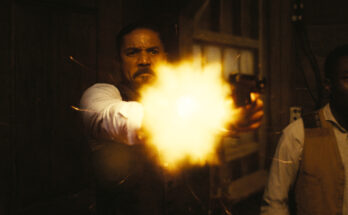
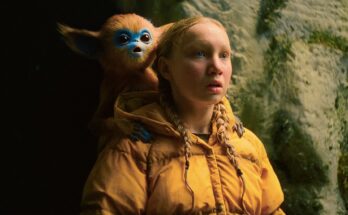
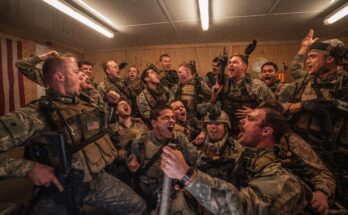
18 Comments on “‘Westworld’ Season 4 Premiere Non-Spoiler Review — “The Auguries””